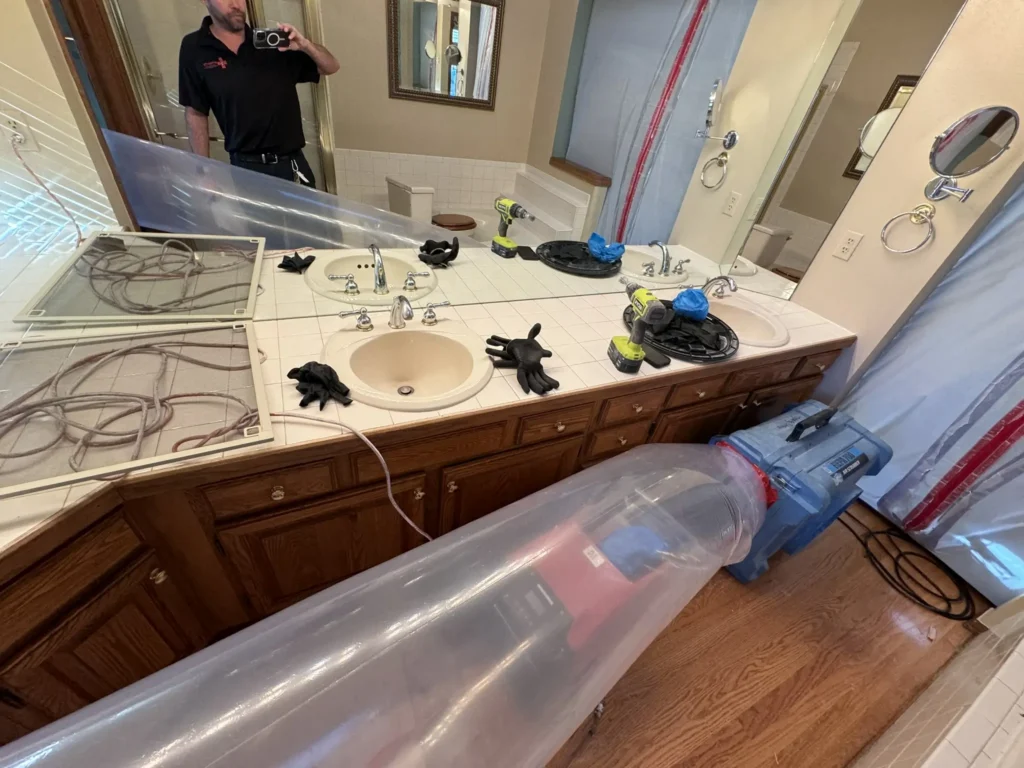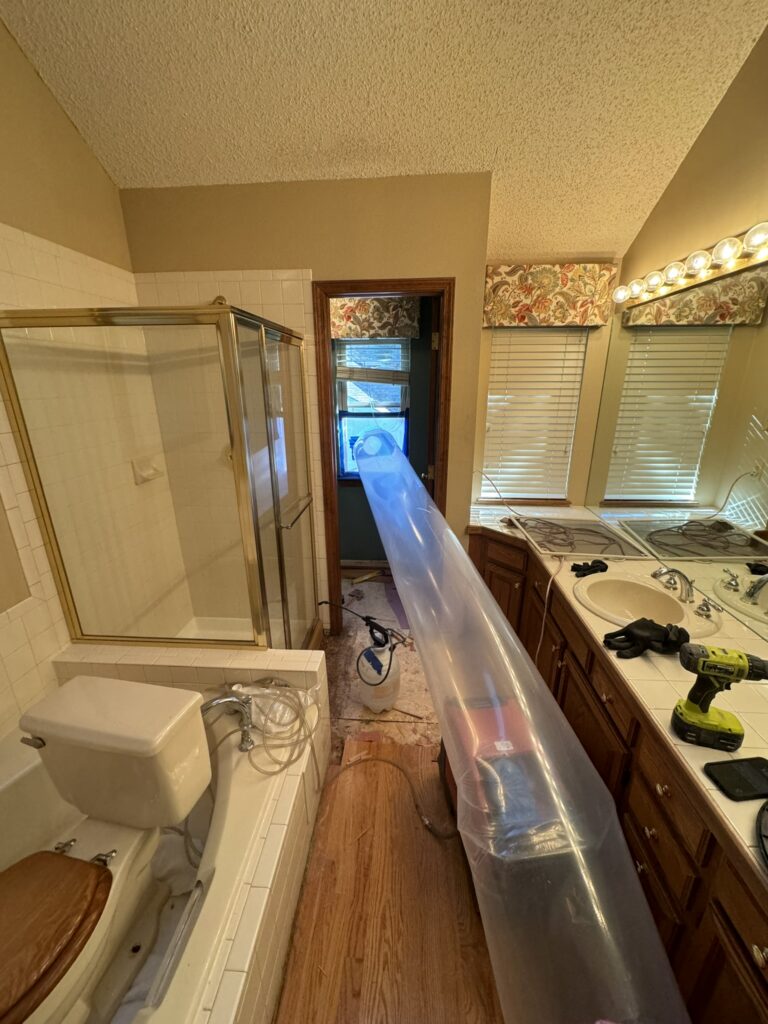Table of Contents
What is a Mold?
Mold is a type of fungus that grows on plants, wood, fabric, food, and any other organic material. Put simply, mold is a natural recycler of dead organic matter.
Mold is an eyesore and a homeowner’s worst nightmare. However, there is much more you should know about mold because once you understand what it is, you will be better able to prevent its growth.
To begin, here are some basic facts about mold:
- Molds are fungi.
- Molds grow on plants, wood, fabric, soil, food, drywall, floors and ceilings.
- Molds produce microscopic spores that germinate where moisture has accumulated.
- Mold growth threatens the structural integrity of a building.
- Mold exposure can lead to serious health problems.
The question “how much does mold remediation cost” does not have a one size fit all answer as A small mold infestation can cost as little as $500–$1,000 to remove, but professional mediation for large problems can cost up to $30,000.
Mold Remediation | Mold Remediation cost
Mold remediation involves the removal and elimination of mold from an area. Mold can grow where moisture and organic material mutualize with at least 60% humidity. Depending on the mold remediation method used, the process can include containment where the area is isolated to prevent the spread of mold spores.
The affected space will need time to dry and must remain undisturbed for at least 24 hours. Some mold removal processes can include treating affected wood with a primer and repainting with a paint that has mildewicide to prevent mold from returning.
What Is the Average Cost of Mold Remediation?
Mold remediation costs vary because of several factors. The extent of the damage will dictate the cost the most, as mold removers can charge per square foot.
The various factors that determine the mold remediation cost are;

A. Mold location:
The more difficult it is to get to and remove the mold, the higher the mold remediation cost. The location of the mold within your house has a large impact on cost, especially as it applies to how hidden or widespread the problem is.
- Basement mold removal: A 1,000-square-foot basement can cost between $500 and $3,000, depending on the size of the mold problem. Basements tend to have more damp areas than other rooms so it has greater potential for mold to spread. Costs can compound if mold has gotten into drywall or if the basement wasn’t properly encapsulated.
- HVAC duct mold remediation and removal: Some mold removal companies will clean HVAC ducts to eliminate mold after cleaning an affected area since the HVAC system can continue to blow spores around your home. Duct cleaning can cost between $300 and $700. Some removal companies can instead fog the ducts to remove the mold that might exist there, which can get charged per square foot.
- Attic mold remediation: The average of mold remediation cost from an attic can range from $1,000 to $7,500, depending on the issue. If the mold can get treated, the cost will remain lower, but should any insulation need replacing, the costs can rise.
- Bathroom mold remediation: Most bathroom mold remediation cost from $500 to $1,000, but if the mold has spread behind things like tile or a vanity, costs can increase significantly to the tune of $10,000 or more for a bathroom remodel.
- Whole-home mold remediation and removal: Whole-home mold remediation costs can range from $5,000 for a 2,000-square-foot home up to as much as $30,000 in some cases. Mold specialists usually classify mold problems by levels with level three being the worst and requiring the most remediation work.
B. Size of affected area:
The greater the size of the affected area, the higher the mold remediation cost.
Professional mold remediation generally costs $10–$30 per square foot.
C. Mold type:
Certain mold and fungus types are more dangerous and difficult to remove, thus increasing prices. The Environmental Protection Agency (EPA) doesn’t distinguish between mold species in its recommendations for mold cleanup. However, some types are more difficult to remove than others, so the cost of mold removal is determined by species to some extent;
- Alternaria: Alternaria mold appears as a dark, green-gray color and mostly exists outdoors. It can travel indoors and spread on carpets, wallpaper, and fabrics.
The average cost of it is $700–$6,000.
- Aspergillus: Aspergillus mold comes in a variety of colors from white, green, and red. Penicillin is derived from Aspergillus and those with a penicillin allergy can feel the effect of Aspergillus. Similarly to Alternaria, its average cost is $700–$6,000.
- Chaetomium: Chaetomium has a blue-green color and can appear in areas that have experienced prolonged periods of high humidity and dampness. It can appear most often in air ducts and walls. The average cost of it is $600–$5,000.
- Cladosporium: Cladosporium has a white color and can appear often. It can affect people with allergies and asthma. Its average cost ranges from $700–$6,000.
D. Labor:
About 60% of the price of professional remediation efforts goes toward labor. The above prices apply to hiring professional mold removal companies. Labor accounts for about 60% of the total cost, with materials and the cost of specialized air-handlers accounting for the other 40%. Labor costs for mold removal and remediation typically get rolled into the square footage cost of a quote, but according to “Cleanfax’s 2021 Restoration Benchmarking Survey Report”, mold remediation labor costs averaged $99 an hour with a median cost of $75 an hour. Labor costs will vary based on the size of the project and the number of people needed to remove mold.
What next after Mold Remediation?
Removing the mold is often just one part of the equation in mold remediation. Once the mold is removed, you have to look at the situations that caused it in the first place. If a broken pipe leads to excessive moisture, you’ll have to repair that and any additional water damage. Depending on the damage, removal costs can increase if it takes multiple days and a dumpster.
Where the mold appears can make a difference, too. A mold problem in a basement or crawlspace can mean encapsulation of the space so mold doesn’t reappear. To stop mold from appearing you need to reduce humidity, moisture, and organic material in your home that mold can latch on to.
CONCLUSION:
You can and should clean small areas of mold yourself with some protective gear and good cleansers. However, it’s best to hire a mold remediation specialist for large mold problems, mold in the walls, or if you or someone else in your home has respiratory problems. Remediators know how to remove mold-damaged building materials without spreading spores, helping keep you and your family safe. Also worthy to know Mold remediation cost depend greatly on the location of the mold.

FAQs;
- What are the signs of mold?
Mold can come in many different colors but usually anything with a green, white, gray, blue, pink, or yellow color and a fluffy or slimy texture indicates mold. Mold also gives off a strong musty smell and appears in areas, like bathrooms that can have high humidity. Mold can also trigger allergies, asthma attacks, and skin and eye irritation.
- How long does remediation take?
There’s no straightforward answer to how long it will take to remove mold from your home. The duration of mold removal can vary widely depending on several factors, including the mold growth’s severity, the mold’s type, the size of the affected area and the remediation methods used. Therefore, mold removal can take one to three days, while severe mold growth can take up to five days.
- Why is mold remediation cost not covered by insurance?
Insurance companies can deny mold claims because they contend mold results from negligence. Mold can get covered under homeowner’s insurance if the mold growth stemmed from a sudden or accidental peril, like a plumbing leak, a flood, a toilet overflow, a dishwasher or washing machine failure or firefighters extinguishing a fire. It’s best to check your policy and speak with your insurance company to see what’s covered.
